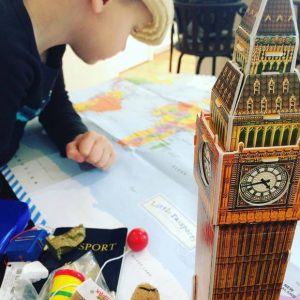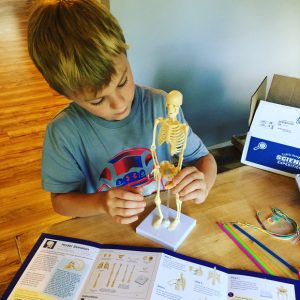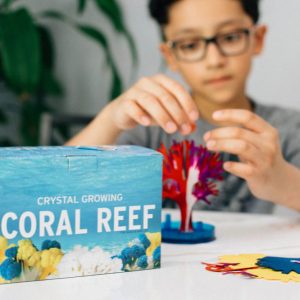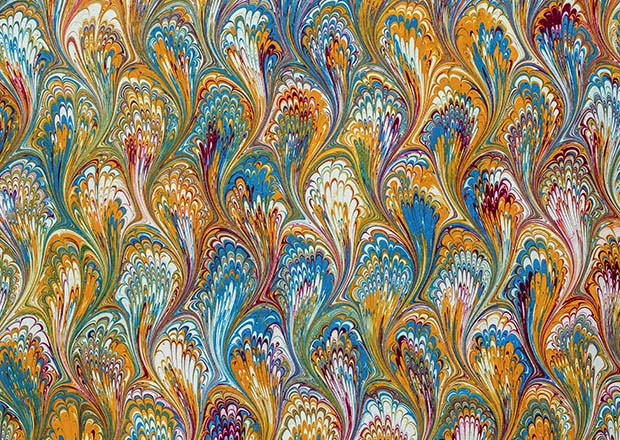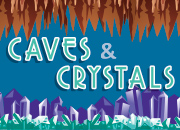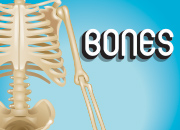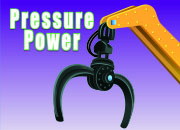Welcome to Science Expeditions Extras!
Dive deeper into your science kit’s theme and experiments. This month, learn a little extra about buoyancy.

Buoyancy
 How is your nautical vocabulary? Sofia and Sam learned a few terms on their expedition: A boat carrying too much weight can become “swamped” (filled with water) or “beached” (stuck in mud or sand). A boat that is too heavy can also “list” (lean to one side), “capsize” (flip upside down) or “founder” (sink). On the other hand, a boat can be too light! Submarines fill special compartments with water so they’ll sink and stay balanced under water while moving. That extra weight is called “ballast.” Big ships sometimes add ballast, too, filling parts of their hulls with gravel or sand so they don’t “pitch” and “roll” (rock back and forth). Sail through the extras on this page and discover more about buoyancy, boats and what floats!
How is your nautical vocabulary? Sofia and Sam learned a few terms on their expedition: A boat carrying too much weight can become “swamped” (filled with water) or “beached” (stuck in mud or sand). A boat that is too heavy can also “list” (lean to one side), “capsize” (flip upside down) or “founder” (sink). On the other hand, a boat can be too light! Submarines fill special compartments with water so they’ll sink and stay balanced under water while moving. That extra weight is called “ballast.” Big ships sometimes add ballast, too, filling parts of their hulls with gravel or sand so they don’t “pitch” and “roll” (rock back and forth). Sail through the extras on this page and discover more about buoyancy, boats and what floats!
Gather these household items from the list below before you begin your experiments. Check off items as you go or print the list here. All other materials are included in your kit.
Paper Marbling
water
tablespoon & teaspoon
measuring cup
shallow tray (at least 6 in. x 6 in.)
small cups (at least 4)
clean disposable container with lid (should hold at least 5 cups of liquid)
drying rack or rags (to dry paper)
bin, tray or sink (to rinse paper)
scissors
strips of newspaper (optional)
Float Your Boat
at least 50 of the same coins
water
paper towels
basin (at least 10 in. wide x 4in. deep)
Wave Maker
water
food coloring (any color)
paper towels
oil (baby, mineral, vegetable or olive)
Fun Facts
Pumice is a very lightweight and porous rock filled with tiny air pockets, making it a rock that floats on water! When enough water seeps into the air pockets, though, it sinks.
Many marbling patterns don’t resemble marble at all. Instead, they are whimsically named after what they look like, such as “Sky Dragon,” “Peacock,” “Frog Foot” and “Whale Tail.”
Cans of diet soda often float, while their regular soda counterparts sink. The higher sugar content of regular soda makes it denser than water, causing the can to sink.

Aunt Charlie’s Corner
Expert tips to complete this month’s science experiments!
 Paper Marbling
Paper Marbling
Watch this experiment!
- Be careful when handling hot water. Ask an adult for help. Wrap a towel around the container when touching the hot surface.
- While methylcellulose and alum powders are not harmful, do not ingest the powders. Keep out of reach of small children.
- Allow time for the methylcellulose mixture to thicken and cool. Remember to shake or stir the mixture periodically.
- The methylcellulose mixture can be preserved in the refrigerator for up to a week. You may notice it becomes more jelly-like at the bottom of the container with time.
- If you run out of paper or paint, experiment with index cards or acrylic paint.
- The consistency of the paint is important when making the paint float. Try these tricks:
- Your paint should float and spread out across the surface of the size. If it doesn’t, it will not stick to your paper. Try dipping the pipette into the paint and flicking the pipette to create spatters on the size.
- If your paint is too thin in the cups, alternatively try squeezing paint into your pipette from the small paint containers instead and then make drops on the surface of the size. It may help to have more concentrated paint.
- If your paint is too thick to squeeze from the pipette, add more water, drop by drop. Be careful not to add too much.
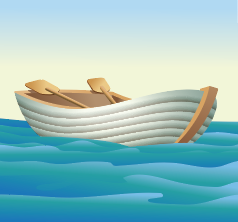 Float Your Boat
Float Your Boat
- Add the coins to your aluminum boats one at a time. Place them evenly at the bottom of the boat so the weight of the coins isn’t on one side.
- Make sure there is enough water in the basin. It should be no less than 3 inches deep.
- Be aware of leaks in your boats. Fold and tuck the edges of the aluminum sheets to avoid leaks and cracks.
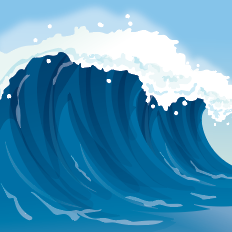 Wave Maker
Wave Maker
- Have paper towels handy to wipe off any oil from the bottle, or for any spills.
- For added interest, drop a small piece of cork, plastic or wood into your bottle to act as your “boat.” See if it floats and have it ride the waves.
Print and Play
Use this chart to test the buoyancy of different objects from around your home.
Photos
Check out more beautiful marbling designs and techniques!
Flip through the gallery.
Explore More
Click a button below to learn about another science theme.
We Our Community
